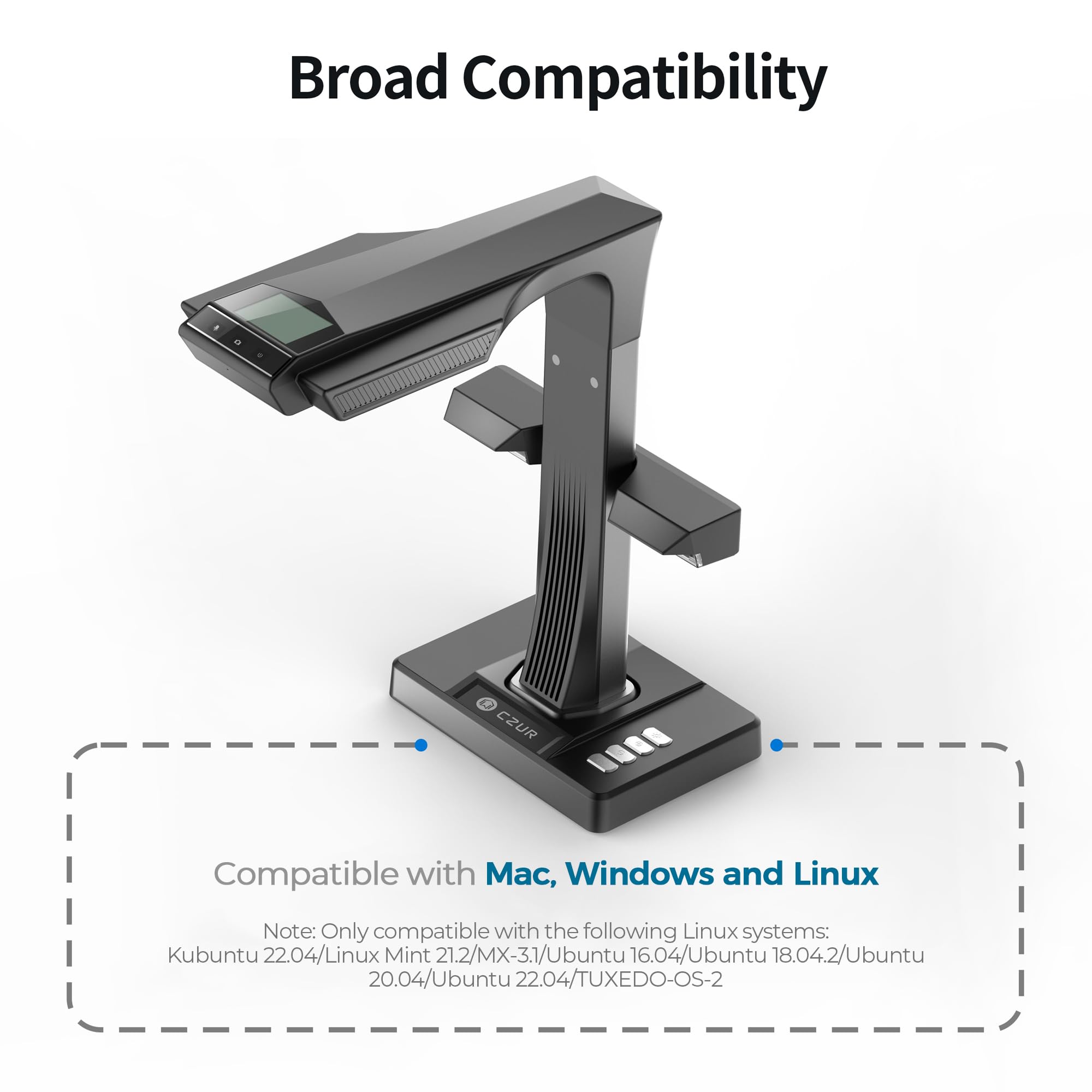Liefern zu GERMANY
IFür die beste Erfahrung Holen Sie sich die App
Kundendienst
Copyright © 2024 Desertcart Holdings Limited










📖 Scan Smart, Live Smart!
The CZURET24 Pro is a cutting-edge professional book scanner featuring a 24MP HD camera, advanced auto-flatten and deskew technology, and support for over 180 languages in OCR. Compatible with Windows, MacOS, and Linux, it allows for seamless digitization of A3 and A4 documents, ensuring high-quality scans with minimal glare. With real-time preview capabilities and versatile connectivity options, this scanner is designed for efficiency and precision.



| Item Weight | 1.5 Kilograms |
| Item Dimensions D x W x H | 14.76"D x 8.66"W x 15.35"H |
| Minimum System Requirements | Windows XP |
| Standard Sheet Capacity | 10 |
| Paper Size | 16.53 X 11.69 Inches |
| Optical Sensor Technology | CMOS |
| Connection Type | USB |
| Resolution | 5696*4272 |
| Supported Media Type | USB |
| Scanner Type | Book, Document |
TrustPilot
vor 1 Monat
vor 2 Wochen